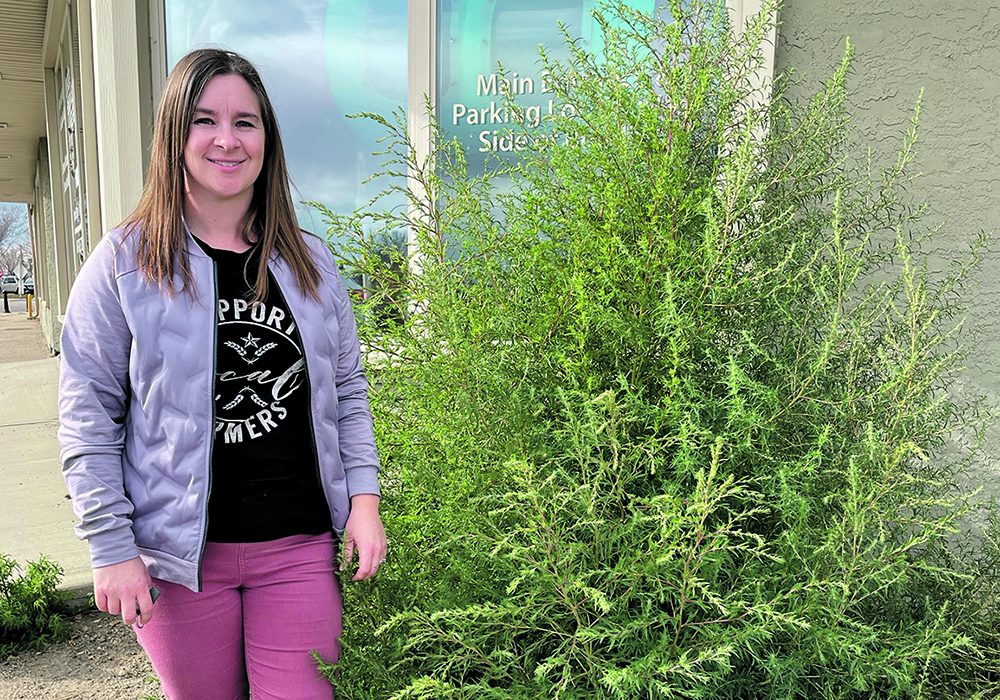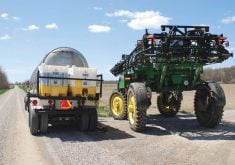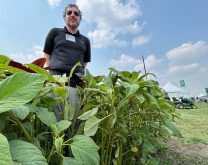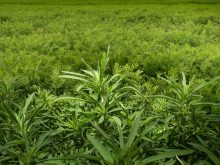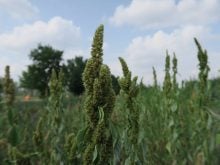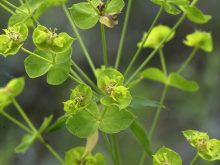Glacier FarmMedia – The past few seasons have been a challenging time for farmers on the Canadian Prairies. Extreme heat, lack of precipitation and steep increases in production costs have caused some sleepless nights for many producers.
As if those weren’t enough to contend with, another potential threat to crops will soon rear its ugly head: weeds.
Experts from the Prairie provinces were consulted on this weed outlook for 2024, to help growers prepare for the upcoming season.
Read Also

Soybean market still figuring out implications of China-U.S. pact
Soybean futures had a muted reaction to the U.S. trade deal with China as the market tries to figure out the nuances of the deal.
Manitoba
The 2023 growing season in Manitoba was mostly a good one in terms of weed control, thanks in part to relatively dry conditions which limited the proliferation of some weeds in many parts of the province.
Still, 2023 wasn’t without weed challenges, according to a specialist with Manitoba Agriculture.
Kim Brown says some pockets of the province received large dumps of rain midway through the season. As a result, the province saw a “flushing” of warm-season breakthrough weeds later in the summer after herbicides had already been applied. Weather conditions also made applying in-crop sprays particularly challenging.
Manitoba received relatively little snow this past winter. Combined with above-average temperatures this spring, that could bode well for the province’s weed outlook in 2024, Brown says.
“Right now it’s looking like we could have a very early spring and I think that would be very good, to get our crops in early, get them up and get them growing, get them to where they’re competitive. An early spring (can help) growers get ahead of the weeds,” she says.
The dry conditions facing most parts of the province can lead to an increase in certain weeds. Brown says that’s likely to increase salinity levels in some regions — and some weeds, particularly kochia, thrive in those dry, saline soil conditions.
“We have trouble establishing crops in these areas and the crop that does establish is not nearly as competitive as it could be and weeds like kochia start taking off,” she adds.
Kochia has been the most serious weed threat in Manitoba for some time and Brown expects that to be the case again this season.
“Our No. 1 weed problem that’s in front of us right now is kochia and it’s getting worse and worse,” she says.
“It’s moving into areas where it really wasn’t a big problem before. It does well in saline soils and of course we are seeing our salinity increasing after some dry years. We have net upward movement of water in the soil profile because we’re just not getting those rains from the top. Salts move up with the water, so they accumulate at or near the soil surface.”
There are several tools growers can use outside of tank mixes to fight kochia. Brown says the most effective of those is to maintain as diverse a crop rotation as possible. Another is to promote crop competition that can help choke out many weed threats.
Last year was a bad year for pigweeds, such as redroot pigweed and waterhemp. The latter is a becoming a serious concern as it appears to be popping up in more and more locations in the province each year.
“We’ve got it in a good chunk of the province now and we’ve got some fields that had some pretty high infestations last year. That’s very concerning because that is a weed that can displace pretty much all of our cropped acres,” Brown says.
Part of why waterhemp is so challenging to deal with is that it comes pre-loaded with resistance. It’s already resistant to most products available to fight it, including Group 2 and 9 chemicals and some Group 14s, by the time it shows up in a field.
Brown says it’s important growers use pre-emergent products with a residual component as much as possible. In the case of soybeans, she also recommends using tank-mix partners such as 2,4-D choline or dicamba with glyphosate for the best results.
Another weed of increasing concern for growers in Manitoba is foxtail barley, a type of bunchgrass that is found in high saline areas. It can show up in most crops, but especially those that are sensitive to salinity such as soybeans and dry beans. The good news with foxtail barley is there are several products available to effectively deal with it.
Growers in Manitoba also need to be aware of the risk of herbicide carryover — a risk that’s expected to be higher than usual because last summer was so dry and the rains that fell last fall didn’t contribute to microbial breakdown, because soil had already cooled by that time.
Brown stressed that it’s crucial for producers to read the labels of any herbicide products they use — and to record how much rain fell on their farms.
Most product labels will say how much rainfall is needed for the chemical to be safe for sensitive crops following herbicide application. Growers may need to wait a little longer before putting certain crops back onto a field after a hot, dry year, she says.
Saskatchewan
Hot, dry conditions hit much of Saskatchewan in 2023. As a result, some weeds thrived while others had limited impact on crops.
The weed outlook for the province in 2024 will depend largely on the type of weather received in coming weeks, says the acting weed control specialist for Saskatchewan’s Ministry of Agriculture.
Cory Jacob says another hot, dry summer likely means weeds that thrive in those conditions will be challenging again. Those weed threats include kochia, Russian thistle, redroot pigweed and green foxtail.

Kochia was a concern for many producers in the province last season due to those hot, dry conditions and is likely to remain so this season, he adds.
“We’ve got kochia that is flourishing,” he says. “That was a big one that a lot of producers were talking about and discussing last year.”
Cooler temperatures and more precipitation would mean more robust populations of cooler-season weeds such as wild oats, wild mustard and possibly volunteer canola.
While pigweeds such as waterhemp and Palmer amaranth have yet to be detected in Saskatchewan, they are definitely on the radar, Jacob says.
“We don’t have them yet here in Saskatchewan, but they’re on the watchlist that we’re monitoring for, just to see when they show up here and if we can be quick to contain them and make sure they don’t spread quickly once they get in the province.”
Jacob urges any growers who detect either weed in their fields to contact the provincial ag ministry to provide confirmation.
“Don’t ignore it. Don’t put your head in the sand. If you can control it early on, it’s a lot easier than if it becomes a larger issue.”
Herbicide resistance should continue to be top of mind for Saskatchewan producers, says Jacob. That’s why they need to keep on top of which chemical groups are still effective and can be part of an effective tank mix, he adds.
Growers may also want to consider agronomic tools such as seeding rates and narrower row spacing to help crops be more competitive against weed pressure.
Herbicide carryover could also be an issue in parts of the province this season, Jacob says. Farms from west-central Saskatchewan down to the southwest corner of the province likely have the highest risk, as those areas have been extremely dry the past several years.
“I would say that’s the area for caution and concern.”
Alberta
Hot and dry conditions in much of Alberta in 2023 helped restrict weed emergence to a certain extent, says a weed scientist with Agriculture and Agri-Food Canada’s science and technology branch at Lacombe.
However, Breanne Tidemann says it was a different story in parts of the province that received substantial amounts of precipitation in June, where weeds such as volunteer canola emerged after the herbicide application window had closed.
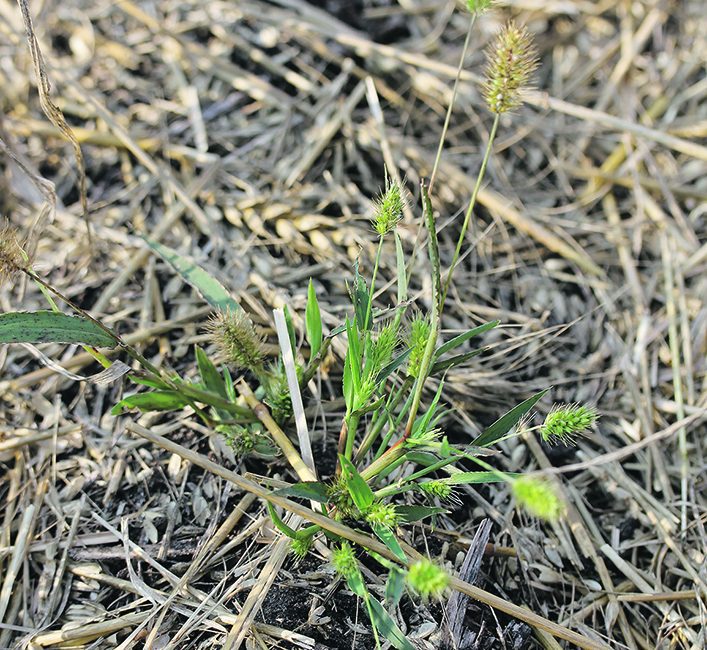
As was the case in the two neighbouring Prairie provinces, kochia was a serious concern in Alberta last season and will likely be so again in 2024, Tidemann says. Of particular concern is how the broadleaf weed appears to be spreading to areas where it wasn’t previously present.
“We really saw some movement of kochia more north last year. We actually had a few producers in this county that were starting to deal with kochia (last year) whereas when I moved here in 2014, I was told kochia doesn’t grow this far north,” she says.
Tidemann says producers who received a fair amount of rain just prior to harvest last year should now be on guard for overwintering weeds such as cleavers, shepherd’s purse and stinkweed.
“We’ve got a study on overwintering weeds and cleavers and they were going nuts with fall emergence because they were getting enough moisture to pop,” she says.
“Areas that have cleavers or have issues with any of those fall-emerging weeds might want to be making a really close (inspection) this spring to see what’s already up. Make sure you’re out there prior to seeding, because a pre-burnoff may be warranted.”
Another possible concern in parts of the province that received precipitation late last season could be volunteer crops such as winter wheat.
Tidemann also suggests growers keep an eye out for pigweeds. Though they aren’t yet a problem in Alberta, Palmer amaranth and waterhemp are present in several bordering states and can move easily via equipment and animal feed.
Two other weeds Tidemann suggests growers need to be aware of are pale smartweed and chickweed. Farmers in some areas are really struggling with smartweed, although Tidemann isn’t sure if that’s due to resistance developing or conditions being favourable for development. Chickweed is being found in increasing locations based on the province’s latest weed survey.
Wild oat continues to pose a significant challenge for growers, thanks in part to the fact it’s almost full-resistant to Group 1 and 2 herbicides.
Tidemann’s advice to producers is to get out in fields early and scout. This will allow them to see what weeds they might be dealing with this season and will help determine why they might be present.
She also recommends growers get resistance testing done if they suspect they might have a herbicide resistance issue in their fields.
“It’s not super expensive and it tells you what options you’ve got left or what options are more useable.”
Tidemann also cautions that herbicide carryover could be an issue in parts of the province that received little precipitation last summer. She adds that’s why it’s important for growers to keep detailed herbicide records, so they know what was applied from year to year and what their carryover risk is.

